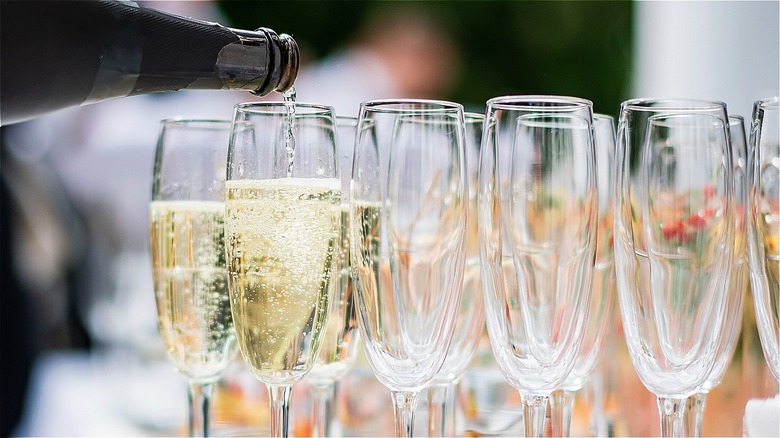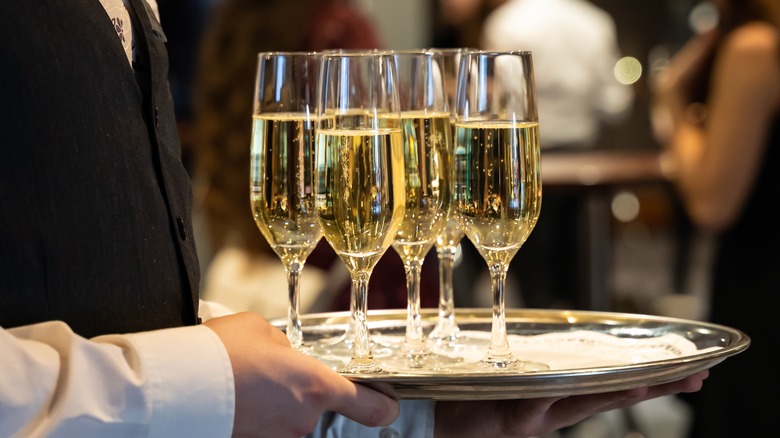What The Bubbles In A Glass Of Champagne Are Trying To Tell You
If you're celebrating a birthday, an anniversary, a farewell party, a promotion, Halloween, or any other occasion, popping a bottle of Champagne is tantalizing. This is because Champagne is a celebratory beverage and for good reasons. The drink is not only delicious but also has a rich history to identify with. Despite being produced around the world; the most prestigious Champagne comes from Champagne in France. In fact, a French agreement stipulates that champagne must come from Champagne in France (although that's not always obeyed). But don't panic yet. All Champagne is sparkling wine, and that's where the first law of Champagne – the French agreement – stops paving way for Champagne brands that you can grab from your local store.
Champagne also subscribes to Henry's law. According to Anne Marie Helmenstine, a chemistry expert with ThoughtCo, Henry's law "states that the mass of a gas which will dissolve into a solution is directly proportional to the partial pressure of that gas above the solution." When you look at your champagne bottle, you can see some gas present below the cork. To conform to this law, the pressure of that gas must be in balance with the one dissolved in the drink.
In an unopen bottle of champagne, the two are in balance. When you pop it open, one escapes and throws the other out of balance. That is when you see the bubbles.
Bubbles in a glass of champagne signal quality
The long sequence of small rising bubbles in a glass of champagne tells you about the high-quality, flavor, and aroma of your drink according to Science Daily, with tinier bubbles signaling even better quality. Carbon dioxide is the culprit behind what has become a famous bubbling character of champagne. In the fermentation stage, yeast breaks down sugars in grape juice to form both carbon dioxide and of course, alcohol. This carbonation does not stop here for champagne. It continues even in the bottle. As Henry's law dictates, the trapped gas must escape from the drink forming those tiny bubbles, to retain the balance lost when you open the bottle.
A TikTok user has posted a video to demonstrate the working of these bubbles. @bonappetitmag pours a glass of sparkling wine and shows tiny bubbles escaping from the drink. "This is what you really pay for [bubbles] when you talk about Champagne. And this is a sign of quality? Absolutely," he tells the viewers, adding that "it makes for a better drinking experience."
This is seconded by experts in the field like Gérard Liger-Belair. "Our ultimate goal is to create smaller bubbles in champagne wines," Liger-Belair, an associate professor at the University of Reims Champagne-Ardenne in France tells Science Daily. Smaller bubbles mean better champagne because there are more of them to release its characteristic aroma and flavor. Now it's time to discover more about what is Champagne.

